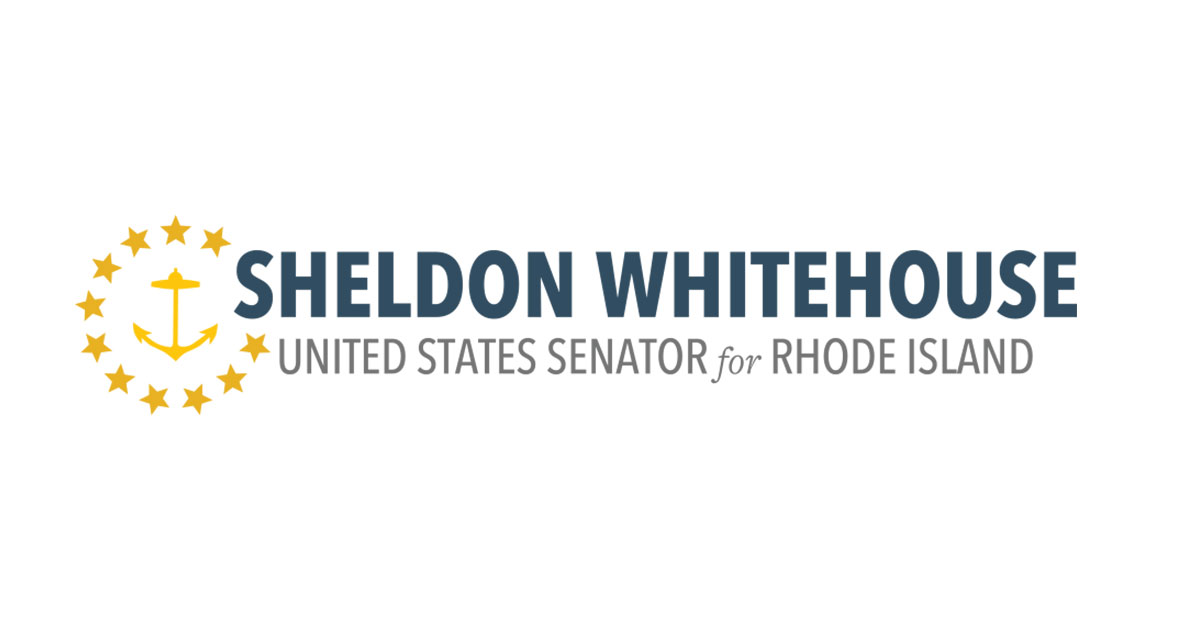Source: United States Senator for Rhode Island Sheldon Whitehouse
03.22.23
SITE Act would speed build-out of interstate transmission lines to connect and upgrade regional grids
Washington, D.C. – U.S. Senator Sheldon Whitehouse (D-RI) and U.S. Representative Mike Quigley (D-IL) today introduced the Streamlining Interstate Transmission of Electricity (SITE) Act, a bill to improve the process of constructing long range, inter-regional high voltage transmission lines throughout the United States.
“If we don’t build more long-range transmission lines, much of the low-cost clean energy that is coming online will simply not be able to get to the homes and businesses that need it. Our SITE Act would increase grid reliability, upgrade the nation’s creaky grid infrastructure, and lower emissions while responsibly balancing local needs and preferences,” said Whitehouse.
“Without increasing transmission capacity we will be unable to end our reliance on fossil fuels and bring clean, renewable energy sources online. I am reintroducing the SITE Act, to eliminate barriers that have long stood in our way,” said Quigley. “By establishing a new federal siting authority for interregional transmission projects, we can streamline the approval process, and guarantee that the clean energy investments made in the Inflation Reduction Act benefit Americans in every part of the country. Preparing our electric grid for the clean energy future cannot be postponed. We must prioritize this endeavor to safeguard our clean energy future.”
The SITE Act would establish a new federal siting authority at the Federal Energy Regulatory Commission (FERC) to ease the process of constructing long range, inter-regional high voltage transmission lines. New transmission lines are needed to get more renewable energy to homes and businesses. Without doubling the rate of transmission builds, the U.S. could lose up to 80 percent of the historic Inflation Reduction Act’s emissions reduction benefits.
Construction of new long range transmission lines currently faces significant hurdles due to the complex and intensive coordination required between states, federal agencies, regulators, industry, and local landowners. The new siting authority created by the SITE Act would eliminate some of those barriers for transmission lines that cross multiple states. Additionally, the SITE Act would better protect landowners by providing eminent domain authority under the Federal Power Act for these transmission lines with guardrails against abuse.
In the Senate, the SITE Act is cosponsored by Senators John Hickenlooper (D-CO) and Martin Heinrich (D-NM). Representatives Scott Peters (D-CA) and Sean Casten (D-IL) cosponsor the legislation in the House.
“We commend Senator Whitehouse for introducing the SITE Act, which directly takes on the need to expand the nation’s transmission infrastructure to address the climate crisis. Studies show that to achieve the potential of the Inflation Reduction Act and meet our greenhouse emission targets, we need to more than double the historical rate of siting new transmission. An expanded transmission system would also enhance the reliability of our grid, reducing dangerous electricity outages during increasingly frequent severe weather events, and access inexpensive renewable resources that lower costs for electricity consumers,” Gregory Wetstone, President and CEO, American Council on Renewable Energy.
“Unless the U.S. dramatically accelerates the build-out of much-needed transmission infrastructure, we cannot meet our clean energy goals, improve grid reliability, or help consumers save money. Right now, many transmission projects are caught up in overlapping, inefficient, outdated, and unpredictable siting and permitting processes that prevent them from coming online on time and on budget. This is especially true of large interstate transmission lines that could deliver the greatest cost savings and reliability benefits to customers. The SITE Act represents an important step toward taking an all-hands-on-deck approach to building transmission,” said Caitlin Marquis, Managing Director, Advanced Energy United.
“Upgrading our electric grid is a major undertaking, but an absolutely essential one if the U.S. wants to bring new renewable resources online and ensure the long-term security of our energy system. This legislation would significantly improve the process of siting much-needed transmission projects. By establishing new siting authority at FERC for certain high-value projects, the SITE Act provides one-stop siting for multi-state transmission lines — while still maintaining critical opportunities for environmental and community review. These proposals are critical to make the modern grid a reality,” Christina Hayes, Executive Director, Americans for a Clean Energy Grid.
“A modern, 21st century grid is critical for providing American families and businesses with access to the nation’s abundant, affordable, and reliable clean energy. Modernizing our grid will create thousands of good-paying jobs, lower electricity costs and protect customers across the country from power outages due to extreme weather events. The American Clean Power Association commends Senator Whitehouse for his leadership on this important issue, and we look forward to continuing to work with him and lawmakers on both sides of the aisle as the SITE Act moves through the legislative process,” said Jason Grumet, CEO of the American Clean Power Association.
“With Americans’ rapidly expanding electrification needs and new power generation coming online, our aging grid needs significant updating, and high-capacity electricity transmission is critical. But because of bureaucratic red tape, interstate transmission lines are in a gridlock. The SITE Act will undo this gridlock, freeing these high-capacity, multi-state transmission lines to bring power where needed, increase competition, and improve our grid’s reliability. The bill also carefully addresses impacted landowner concerns, providing more clarity and cohesion when a project exercises eminent domain authority,” said Corey Schrodt, Government Affairs Manager, Climate Policy, Niskanen Center.
View the full text of the legislation here.
